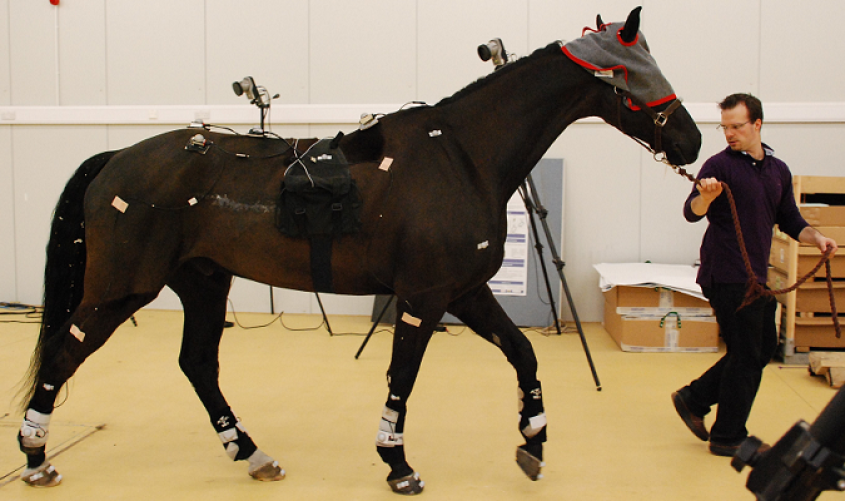Emil Olsen assists with research to identify ataxia in horses
Untitled.png

Dr. Emil Olsen evaluating a horse.
Credit: Royal Veterinary College
While working on his Ph.D at the Royal Veterinary College's Structure and Motion Lab, Dr. Emil Olsen, helped develop a method of objective evaluation that can help differentiate horses with ataxia, a neurological disorder resulting in an uncoordinated or drunken gait, from those with other mobility issues.
Olsen is currently a resident in Large Animal Internal Medicine and Neurology at Cornell’s Department of Clinical Sciences.
Below is RVC's press release regarding the study.
RVC research team is one step closer to objective detection of horses with ataxia
Researchers at the Royal Veterinary College (RVC) have developed a method of objective evaluation that can help differentiate horses with ataxia, a neurological disorder resulting in an uncoordinated or drunken gait, from those with other mobility issues.
Ataxic horses have greater variation in the excursion of their lower limbs than normal horses. Researchers found that blindfolding ataxic horses made the deficits more readily identifiable, suggesting that a compensatory mechanism exists that could be targeted for improved rehabilitation.
In an international collaboration with Bern University in Switzerland and led by the RVC in the UK, researchers used the state-of-the-art gait laboratory at the RVC and Qualisys motion capture cameras to assess horses’ gaits down to an accuracy of 3mm, in parallel with assessments from a team of expert clinicians. They found that variation of the vertical movement of the hoof and fetlock is markedly increased for horses with mild to moderate ataxia and further, that blindfolding the horses significantly increased the variation of their walking movements.
“This increased variation of the gait when the blindfold was applied in ataxic horses, hints towards vision playing a role in helping stabilise the gait - something that has never been shown in animals”, explained Dr Emil Olsen, the primary researcher and a resident in Large Animal Internal Medicine and Neurology at Cornell’s Department of Clinical Sciences.
The research group has previously shown that agreement amongst experienced clinicians can be poor when assessing presence and severity of ataxia, especially with subtle clinical signs.
“Dr Thilo Pfau and the other experts in the Structure and Motion Laboratory at the RVC use the gait laboratory and portable inertial sensors to assess lameness in horses. By demonstrating that related parameters can also identify ataxia in horses, we hope now to refine these experiments to create a practical approach for assessment of horses with neurological conditions”, said Dr Olsen.
Professor Richard Piercy, who leads the equine neurology service at the RVC, added: “We believe our study will improve diagnosis and assessment of these horses, which are otherwise so frustrating to deal with in practice. Further, we aim to use this system to evaluate surgical and medical treatments for ataxic horses in the future.”
Dr Olsen conducted his PhD at the RVC's Structure and Motion Lab, where he worked on subjective assessment of equine ataxia. He will return to the RVC early next year for a clinical research fellowship, working on gait analysis for dogs and horses with neurologic diseases.




